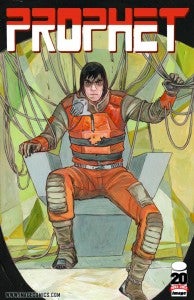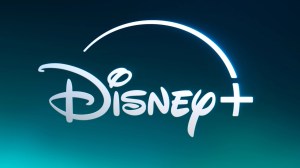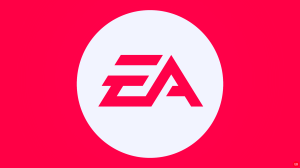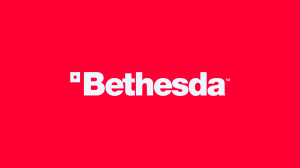Brandon Graham, the cartoonist behind indie hits like King City and Multiple Warheads, recently took over Prophet with #21, as part of Image Comics’s relaunch of Rob Liefeld’s 1990s Extreme imprint. He’s done so to largely positive reviews, bringing with him artist Simon Roy (Jan’s Atomic Heart) for the first initial launch and redefining the look and feel of Prophet–formerly a pretty standard superhero book with a time-travel spin–completely. With a sold-out first issue, glowing reviews and a small avalanche of press coverage, both of the comic and of its press coverage.Graham joined us to talk about these issues, and how he came to be involved with the Extreme relaunch. This particular interview–relatively short, in comparison to the multi-part roundtable that Newsarama pulled after it became controversial–is presented without any alterations, except for spelling, capitalization and grammar, which is how all of the Q&As I do here at ComicBook.com are done.ComicBook.com: So for the uninitiated (which included me until I did a little homework), how did you end up at Image? You’ve done some mainstream work with Hack/Slash and House of Mystery but largely are an indie guy, and seemingly pretty happy that way.Brandon Graham: Right. Usually when I do anything mainstream it’s just a quick job or something for fun but yeah, that’s not my scene. I ended up at Image after becoming friends with Joe Keatinge who is writing the new Glory. Joe introduced me to Eric Stephenson the king of Image when I was having some problems wrangling the rights to get my book King City published. Stephenson really stuck his neck out for me and helped the book make it to print. I’ve been really impressed with how Image treats creators.CB: How involved is Liefeld in the day-to-day at NuExtreme? The one time I spoke with him I got the impression that it was simply not something that was taking up a lot of his time. BG: Liefeld has been really supportive but also hands off on the making of the book. I let him know when I’m planning something drastic and he’s always really enthusiastic about what we’re doing with his characters. Sometimes I’ll email him these insane ideas like “hey can I can I bring back Riptide as a dolphin with gastrointestinal problems ?” and he’ll write back “DO IT!!” so I can’t complain.CB: And is it nice to have an environment that seems to be, once you’ve landed the gig, that the “boss” is largely not present?BG: Yeah, I really can’t see making comics any other way. One of the main reasons I took this on was how open to my ideas Stephenson was when we first talked about it.I’ve worked on comic jobs where you have to check every line you make with an editor and I find that kind of work stifling and gross, if that’s how all companies were I’d rather get a real job and draw comics on the side.CB: The fact that this take on Prophet is so much different from the previous iteration has been a big boon for the book, since the content suits your (and Simon’s) style so well. Is there a kind of thematic through-line that runs from the old book to the new one, in terms of explaining why you’re taking over the old title and numbering even though it doesn’t seem to be the same Prophet?BG: I’m trying to stick to a lot of the same themes as the original run. I like the idea of it being a man out of his time with a mission to do. It’s not exactly the same Prophet but showing what that’s about is a big part of the series. The old issues were so open that it allowed this big of a jump. I’m not sure we could jump genres like we did with many other books.CB: I’ve seen a lot of fans commenting on how your issue really should just be a new #1. How do you feel about that, given that a history with the original character not only doesn’t really help understand the new issue but might actually hurt a reader who tried too hard to make the pieces fit?BG: I really like it starting with #21 both as a middle finger to DC’s relaunch and to convey that there’s a lot of back story to the comic.CB: It’s interesting–with Extreme and Top Cow both (to varying degrees) blowing up the world and starting over–and with Image taking on Vaughan and Staples’s Saga, this strange, unique book seems like it “fits” Image more now than it would have at any other time in the publishing history. Do you think that’s helped in terms of building enthusiasm and support in the company and the comics community?BG: I haven’t read Saga yet, the cover looks cool. but yeah, Image is such a different animal now that it was in the past. It’s hard to look at something like Orc stain and imagine that it came out from the same publisher that did Spawn #1.I started getting published in the 90’s and it was a such a struggle to get work if you didn’t draw like old Image. Such a different environment.CB: With a book that’s sold out at the Diamond level before it ever hits the stands, is it weird to see the disconnect between the enthusiasm for the book, and for the Extreme relaunch, while dealing with people who are really skeptical of Rob, and/or the creators?BG: Yeah, I mean I might feel skeptical myself if I wasn’t in it.










